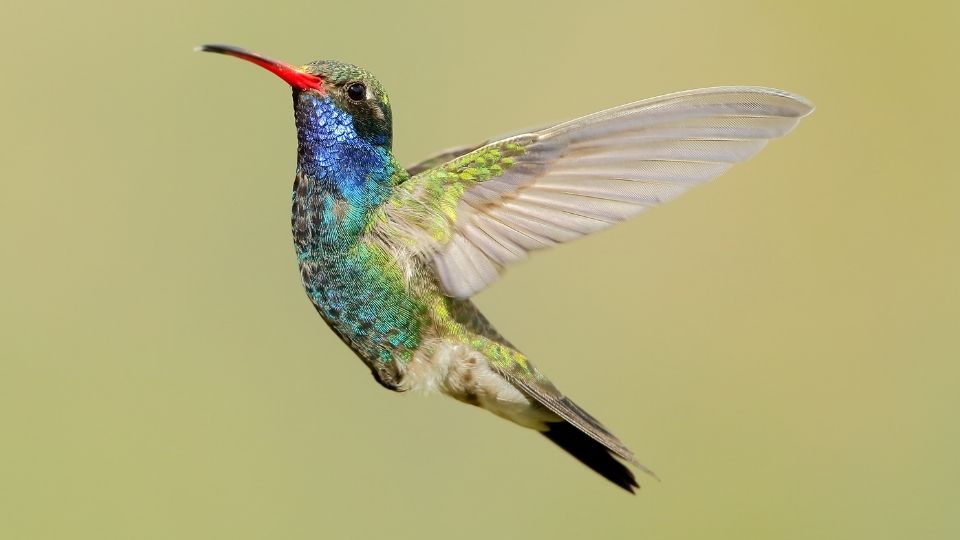There are so many different species of hummingbirds out there that it’s hard to keep track.
Shout out to all birders: After reading this article, find a hotspot to closely birdwatch these species. Hummingbirds in Arizona are likely to be found at these locations. Ask a friend to tag along or look for an association that does this kind of tour. That way, you can tell the difference between them in real life (and not just theoretically).
Audubon has made a bird identification app, so take a peek at it if you want more help.
Hummingbirds are magical creatures – did you know that their heart rate can reach 1200 beats per minute?
Hummingbirds are the smallest birds, but they pack a magnificent appearance. Many types of hummingbirds exist, and not all species can be found everywhere. That’s why it’s essential to know where they nest.
Table of Contents
Hummingbird species in Arizona:
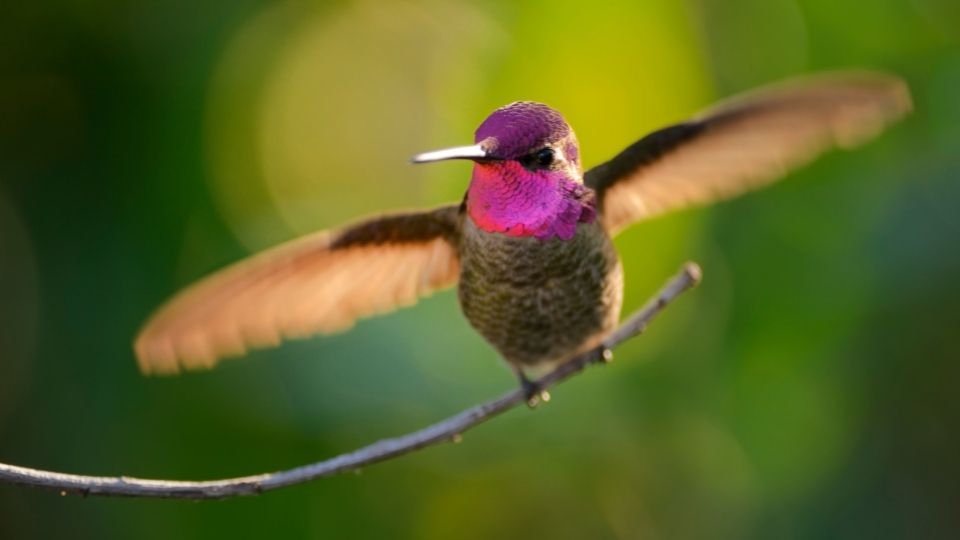
Anna’s hummingbird (Calypte anna)
This is one of the most magnificent hummingbirds out there, and that might be just because of its iridescent red-pinkish throat display (in males). Females have a gray body (sometimes with red spots on the head)
They hang around in southeastern Arizona; their favorite places are parks and gardens. You can see them year-round in the Sonoran desert.
Male Anna’s hummingbirds like a good show when it comes to courtship – they usually do dramatic dives when courting a female.
Some species of hummingbirds you can regularly spot during the summer; others are rare sightings.
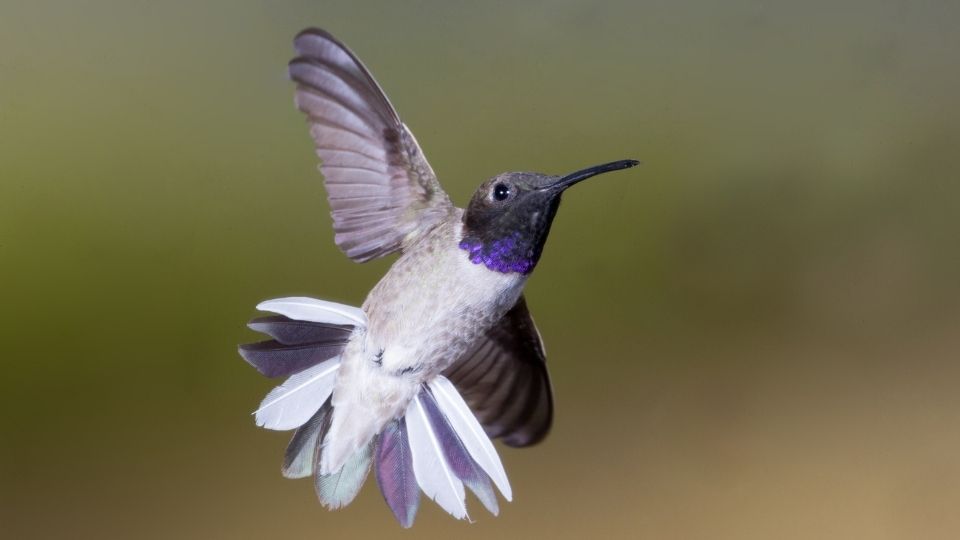
Black-chinned Hummingbird (Archilochus alexandri)
These hummers live in Arizona and New Mexico during summer and travel to Canada in May.
Their bodies are metallic green with gray and white, but males have black and purple throats, while females look duller.
They love trees and vines and are very adaptable.
 perching on a branch.” class=”wp-image-233″/>
perching on a branch.” class=”wp-image-233″/>Costa’s hummingbird (Calypte costae)
Common in the west and southern Arizona during the summer and around Phoenix and Tucson during the winter.
Costa’s hummingbirds like deserts and love desert plants, agaves, and ocotillos.
Males have a metallic green back, a purple crown, and long feathers on the side of their throat. Females are primarily gray and green, with more white on their belly and dark spots on the throat.
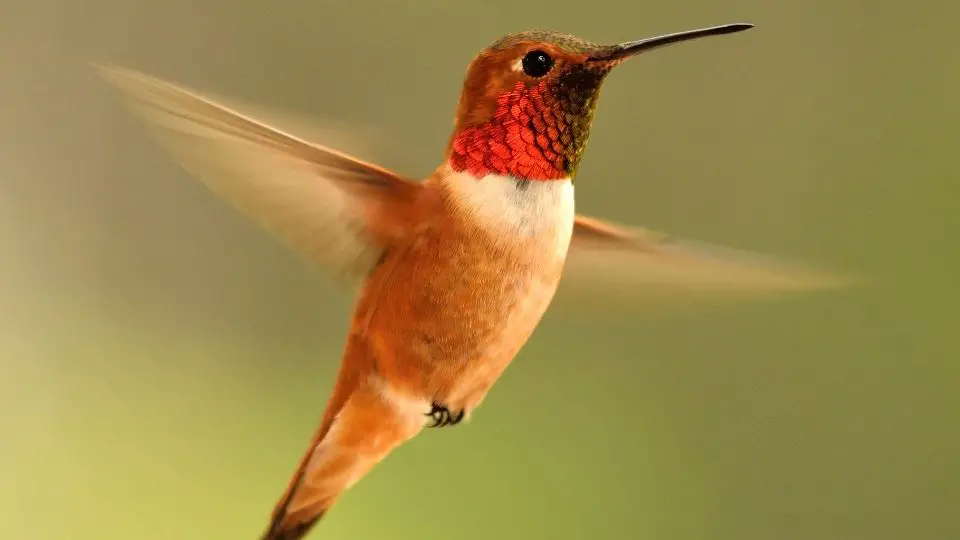
Rufous hummingbirds
Rufous hummingbirds are more aggressive than most hummers, even though they are one of the smallest of the bunch.
They are easy to spot during fall migrations.
Males have an orange or green back with an iridescent orange or red throat. Females are green on the back, crown, and neck, with a white belly and a little copper color on the side.
Most hummingbirds are migratory birds, but Rufous hummingbirds are long-distance migrants – they travel 6275 km every year – twice a year.
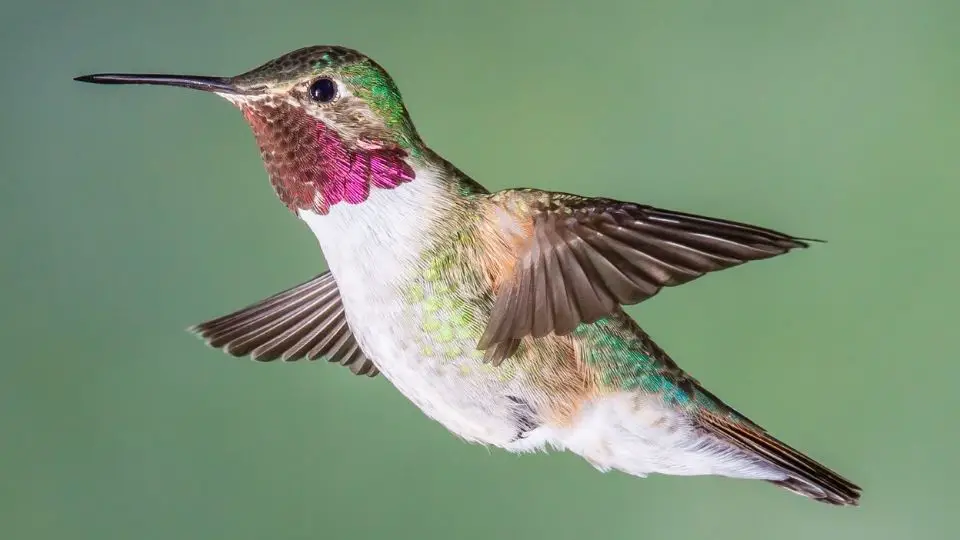
Broad-tailed hummingbird
You can usually find it in southeastern Arizona, Mexico, and Guatemala during winter.
Some broad-tailed hummers migrate; others don’t
Males from this species have a ruby red forget, greenback, and light underbelly. Females have a similar body, minus the iridescent gorget.
Pine and oak groves are the primary nesting spots that these hummers choose.

Calliope hummingbird (Selasphorus calliope)
Male calliope hummingbirds have a metallic green back and a gorgeous iridescent magenta crown. Females have gray and green crowns and a dark-colored tail with white tips.
Their favorite breeding location is in the higher elevations of the Rocky Mountains.
Calliope hummers are usually more reserved than other species because they are victims of hummingbird attacks in general.
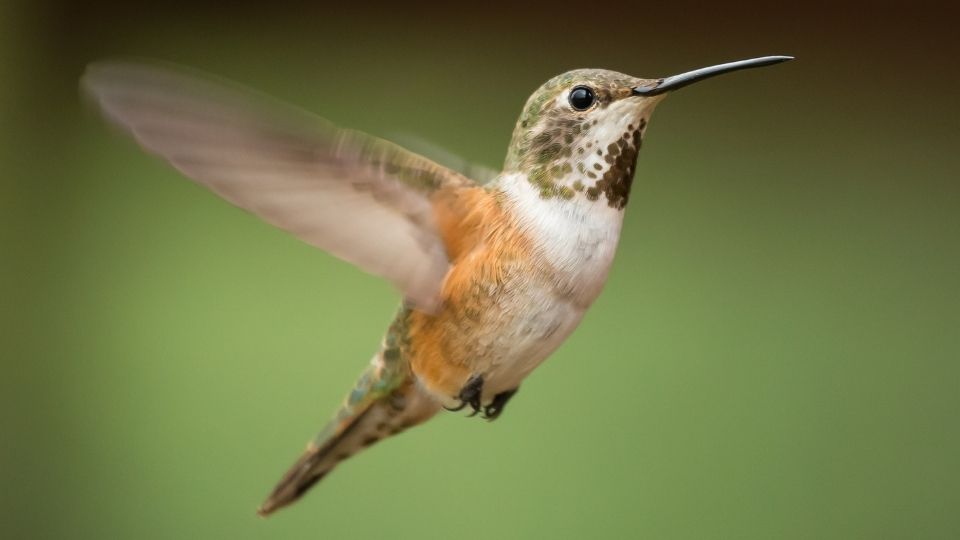
Allen’s hummingbird
These hummers visit while spring and fall migrations take place. You can spot them in southeastern Arizona in June. Some of them stay in California all year.
Their appearance is almost identical to the Rufous Hummingbird, except that adult male Allen’s hummers have a greenback.
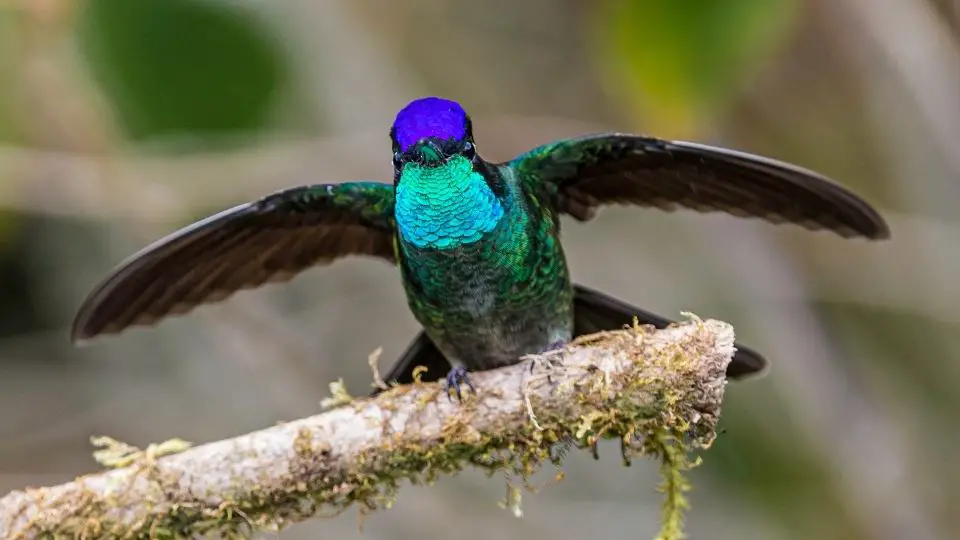
Rivoli’s hummingbird (Magnificent hummingbirds)
Rivoli’s hummingbirds are one of the biggest (and longest) hummers in North America. You can usually spot one in the mountains of Southeast Arizona.
They only travel short distances.
Rivoli’s hummingbirds have a mix of green, blue and purple feathers (sometimes with a touch of yellow).

Lucifer hummingbird
Usually spotted in southeast Arizona around Madera Canyon and spend their winters in Mexico.
The male hummingbird has a Magento-blue-purple gorget with some white on the side. The female is bigger and is brown on the chest and throat.
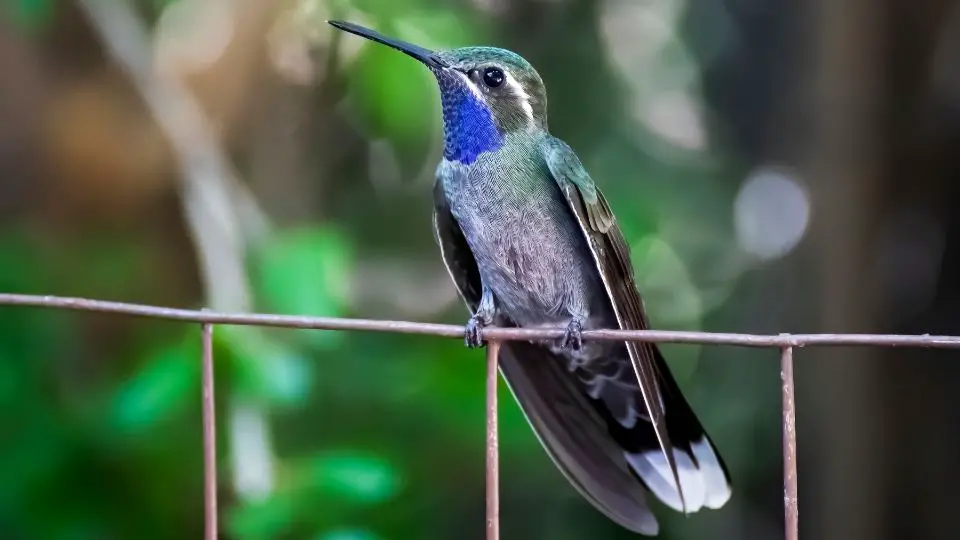
Blue-throated Hummingbirds (Lampornis clemenciae)
The blue-throated hummingbird is larger than most birds. Male hummers have an iridescent blue throat, and their body is a warm green color. Females don’t have such an impressive forget in comparison.
They usually like to live at an elevation of 4000-12000 feet.
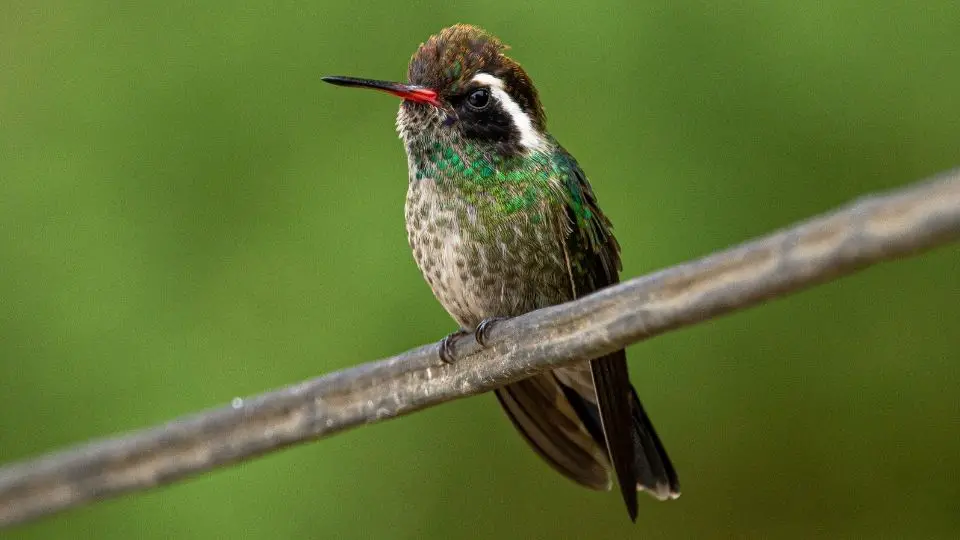
White-eared Hummingbird
These hummers usually live in areas of southeastern Arizona during spring and summer (come breeding season) and spend their winters in Mexico.
As the name suggests, males and females have a white ear stripe – this is more obvious in male hummingbirds.

Berylline Hummingbird
Berylline hummers are wanderers. Sometimes they are spotted in Ramsey Canyon, Madera Canyon, Miller Canyon, or southeastern Arizona – from July through September. Frequently travels to Texas and Mexico.
Unlike other hummingbird species, males and females from this species look very similar – green feathers with a little bit of copper. Tail feathers go from copper to iridescent purple.
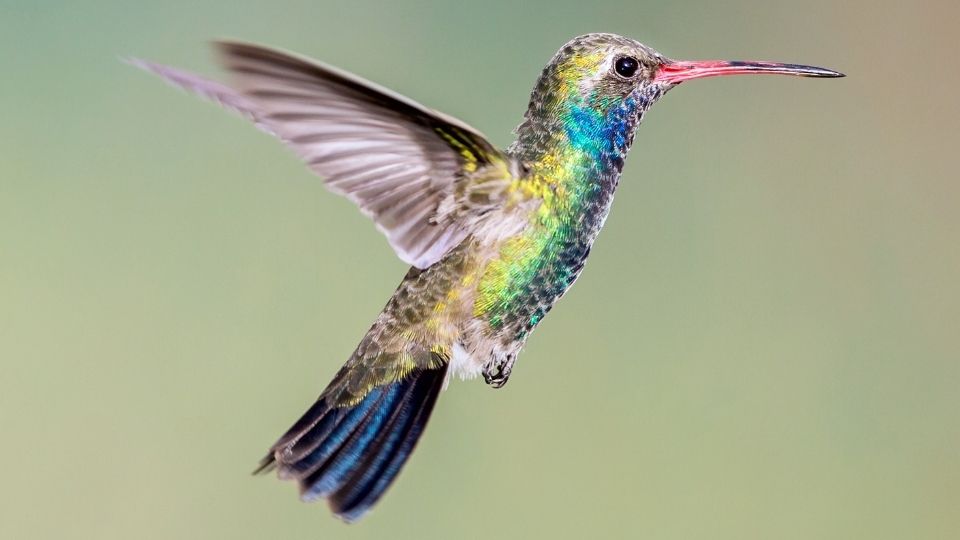
Broad-Billed Hummingbird – Cynanthus latirostris
This is one colorful creature – The broad-billed hummer sport a metallic green body with a blue throat. The female looks plainer and dull compared to him and has an entirely dark bill.
The male’s beak is orange and red with a black tip that sets him apart from other hummingbirds.
March till September is the best moment to spot them in Arizona. They love canyons, so you might have a good chance of spotting them there.
Surprisingly, the number of these hummers has increased over the years.
Other honorable mentions (rare) include:
- Ruby-throated hummingbird
- Violet-crowned Hummingbird
- The Green-violetears/ Mexican-violetears
How to attract hummingbirds?
Tubular-shaped, bright-colored flowers attract hummingbirds – they usually munch on their nectar using their long tongue. They also enjoy tiny insects, spiders, and tree sap.
If you want to attract them to your yard, plant native plants like bee balm, columbine, salvias, or trumpet creepers.
But if you want to attract them yourself, you can by making sugar water (homemade nectar) and put it in a
Good luck!

